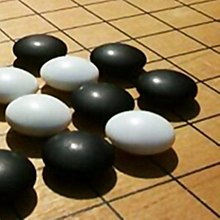| Part of a series on |
| Go |
|---|
 |
| Game specifics |
|
| History and culture |
| Players and organizations |
| Computers and mathematics |
Go proverbs are traditional proverbs relating to the game of Go, generally used to help one find good moves in various situations during a game. They are generalizations and thus a particular proverb will have specific situations where it is not applicable. Knowing when a proverb is inapplicable is part of the process of getting stronger as a Go player. Indeed, several proverbs contradict each other—however they agree in as much as they advise the player to pay attention to the stated situation.
Contents
Go proverbs, life-or-death problems (tsumego), and compilations of go games (kifu) are the three major traditional teaching resources for the game of go.
Several books relating to Go proverbs have been written, for example Go Proverbs illustrated by Kensaku Segoe (瀬越憲作) was published in 1960. Such books do not just quote the proverb but spend their pages explaining the meaning and application of the proverbs.
Some proverbs have a more general applicability. For example, one famous proverb is to move where your opponent wants to move. This may be used as a heuristic in games such as Scrabble . [1]